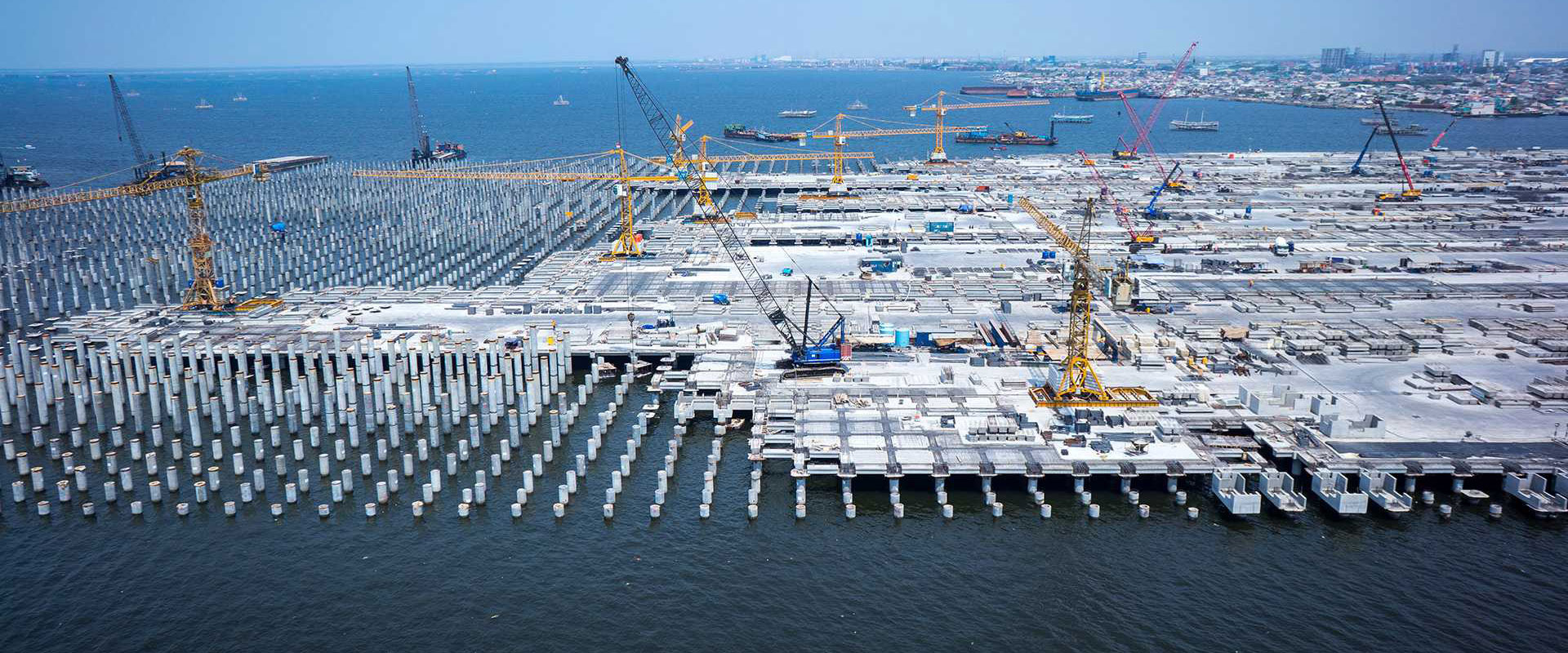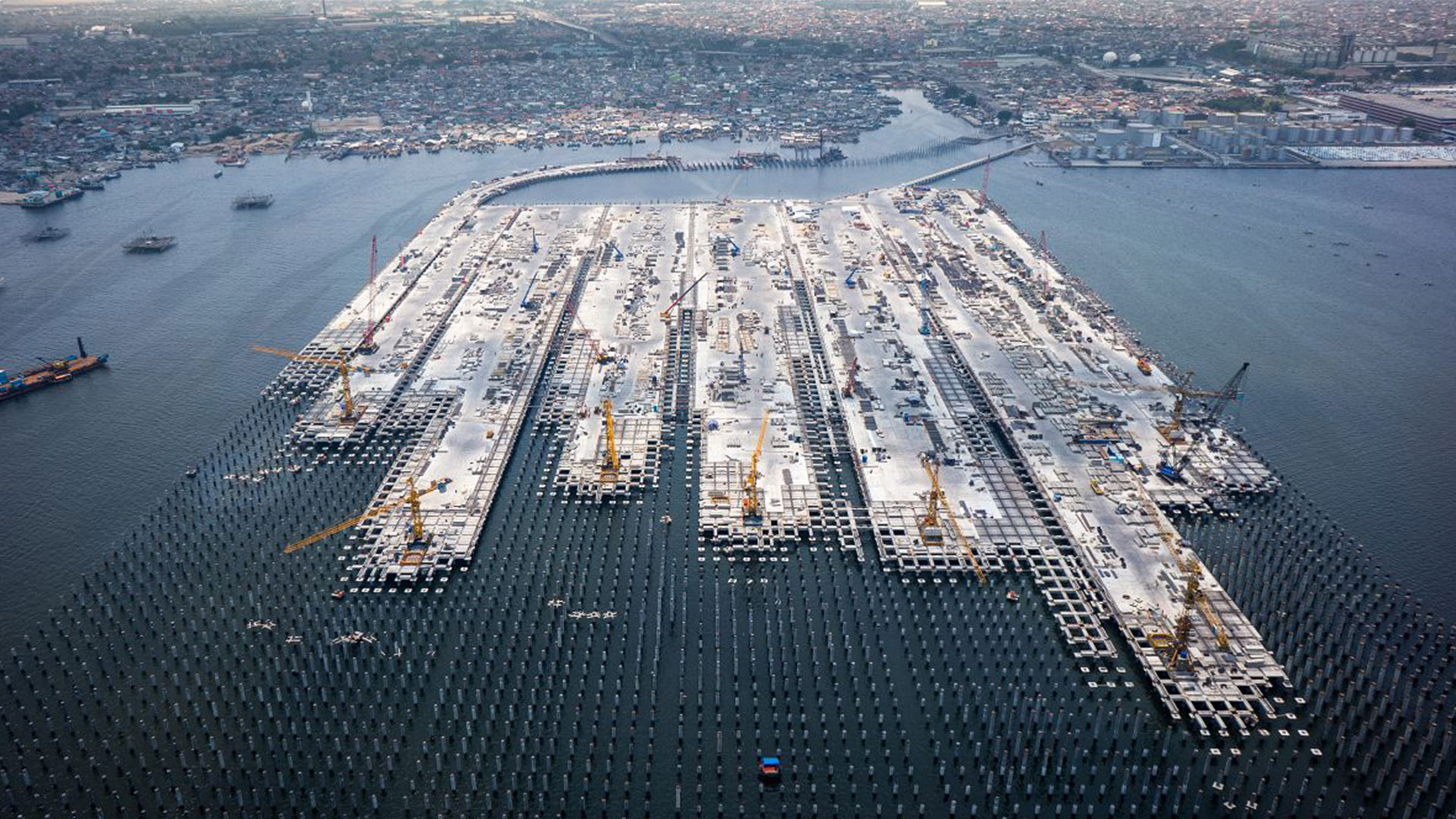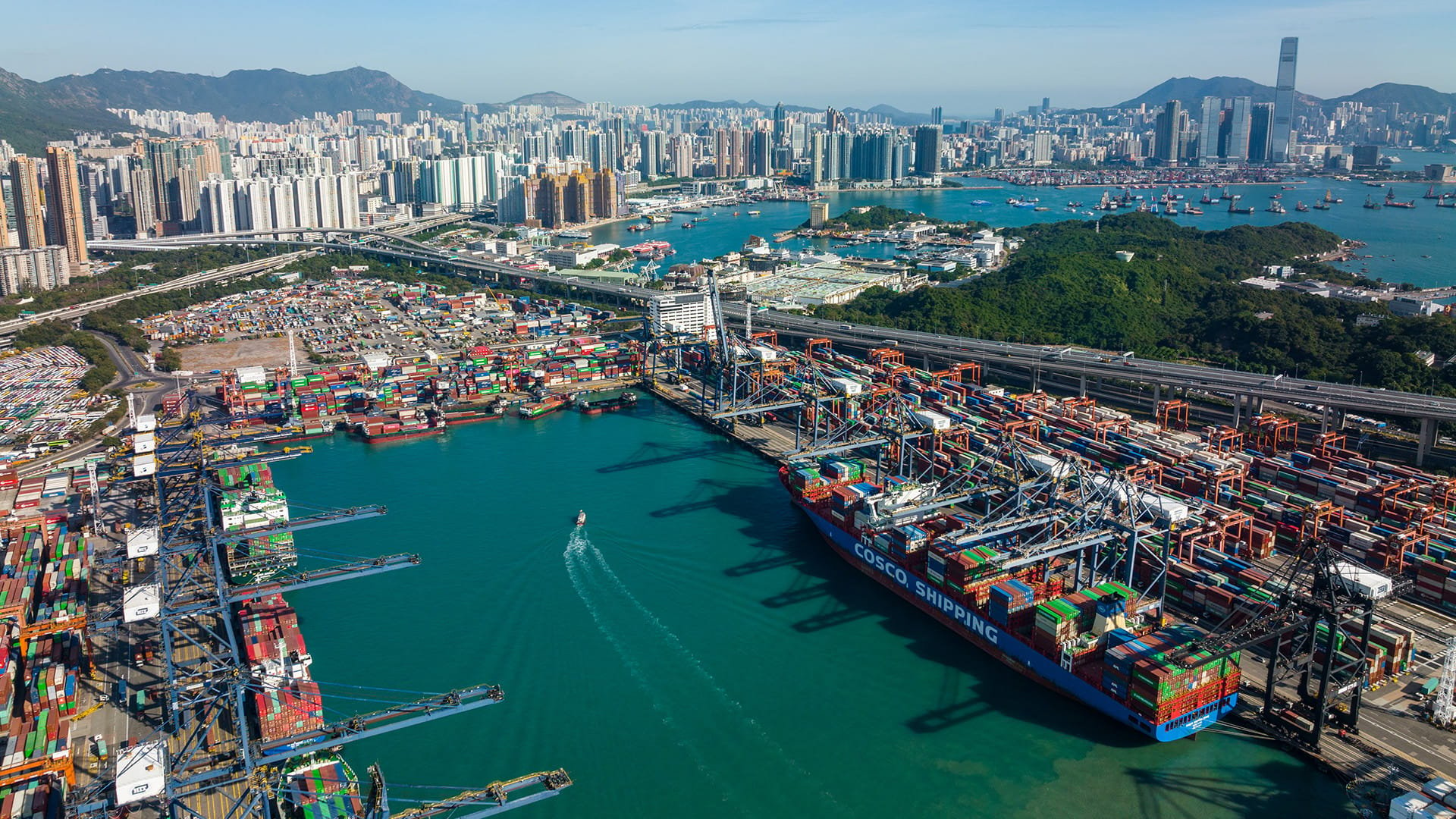Building port resilience to cyclone impacts and climate change
The Kingdom of Tonga’s only international port is responsible for handling 85% of the country’s incoming cargo, but it needed urgent maintenance. Here’s how we upgraded the Port of Nuku’alofa to expand capacity and increase resilience against rising sea levels, cyclones, and other natural disasters.
Contact usContact us
Project facts
- ClientThe Government of Tonga and the Asian Development Bank
- LocationNuku’alofa, The Kingdom of Tonga
- Date2019 – ongoing (expected end date 2025)
- ChallengeUpgrading an ageing port with a limited budget to increase capacity and build climate resilience
- SolutionA modern and sustainable design that improves working conditions and enables trade into the future
The challenge: upgrading ageing port infrastructure on a limited budget
The Kingdom of Tonga is extremely vulnerable to the adverse impacts of climate change and disaster hazards. It regularly faces extreme rainfall, tropical cyclones, earthquakes, and tsunamis.These hazards posed a significant threat to the country’s only international port, the Port of Nuku’alofa on Tongatapu, the Kingdom of Tonga’s main island.
The Queen Salote International Wharf (QSIW), a cargo terminal at the port, opened in 1967 and the latest major maintenance was undertaken in 1999 – more than 20 years ago.
As a result, it had poor lighting facilities, limited capacity for larger vessels, low-lying container yards and access roads, and a height of less than 3 metres above mean sea level.
With sea levels set to rise by 2070, the Government of Tonga needed to upgrade the port to protect it from climate change – but on a limited budget. And because of the country’s reliance on the Port of Nuku’alofa, disruption during the upgrade had to be kept to a minimum.
The solution: a climate and disaster risk assessment and rehabilitation design
The Asian Development Bank (ADB) supported the project with a $45 million grant and, in 2020, engaged Royal HaskoningDHV to undertake the detailed design for the upgrade of the two international wharfs at the QSIW.One of the port’s wharfs was so badly damaged that it was unsafe, and needed to be closed immediately.
Using insights from the local people, we conducted a climate and disaster risk assessment in four stages. This included a literature review, site investigation, condition assessment, stakeholder consultation, and multi-criteria assessment.
We also projected exposure to climate and disaster hazards, identified appropriate resilience measures, calculated investment costs, and explored any residual risk as part of the assessment.
As a result of our research, we proposed to demolish and rebuild wharf 1, extend wharf 2 by 45 metres, build four additional dolphins, and deploy two new channel navigation markers.
The demolished concrete from wharf 1 will be reused in rock bags to form coastal protection, and local concrete used to build yards and buildings.
As part of the rehabilitation of the port infrastructure, four cargo docks will be refurbished, a new seawall built, the container yard reorganised, and the port road upgraded with new lighting and pedestrian access. The project will also introduce green and smart solutions to enhance compliance with international regulations.
To ensure a sustainable life cycle, we’ll establish an asset management framework and a dedicated maintenance team. During construction, the local workforce will be upskilled using training programmes on port operations, environmental working practices, equipment handling, HSE and port security, and gender equality.
It will be the largest ADB project in the Kingdom of Tonga to date.

Cyclone Harold turned the Kingdom of Tonga into a country united, with the tools, knowledge, and solution to protect its people and meet its own challenges head on.
The result: an international gateway with increased capacity for the future
Once construction is complete, the modernised container terminal will be capable of handling the port’s expected throughput for the next 20 years. And it’ll be better protected as climate change makes natural disasters more frequent.Its capacity will enhance to 45,000 TEUs, a 50% increase from the 30,000 TEUs baseline in 2018. And the maximum length of vessels calling at the port will increase from 180 metres to 220 metres, accommodating the global shift to ever-larger ships.
The upgraded port will also have lower maintenance CapEx and a reduced carbon footprint. And will provide safer working spaces for local operators and shipping lines, including new paving, smart lighting, and improved drainage and waste management.
The project will enable the Kingdom of Tonga to continue trading internationally, supporting its workforce safely and stimulating its economy.

DavidPerbey
Business Development Director for Australia and Pacific



